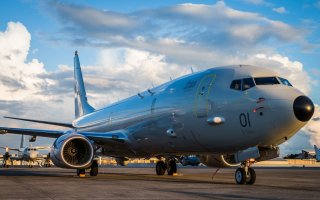Why China Never Wants to See America’s P-8 Poseidon Flying Nearby
Hunting submarines from the air, however, is an airpower-intensive job.
The P-8 also has been a hit with Commonwealth countries. Australia has begun receiving the first of twelve to fifteen P-8As to replace its AP-3C patrol planes. The United Kingdom has nine P-8s on order, and New Zealand announced this month that it approved the purchase of four Poseidons for $1.46 billion. Further afield, at least three P-8s appear to be part of a new $110 billion arms deal with Saudi Arabia, and Norway has five coming its way as well. Other countries reportedly considering the patrol plane include Canada, South Korea and Turkey.
As trans-Pacific relations assume new prominence in the twenty-first century, the P-8 will remain one of a number of means by which the United States and other operators assert their presence over international waters. In the event of conflict, they would also serve a vital role hunting down marauding submarines and tracking the movements of surface adversaries. These qualities explain why the docile-looking patrol plane is in such heavy demand around the world.
Sébastien Roblin holds a master’s degree in conflict resolution from Georgetown University and served as a university instructor for the Peace Corps in China. He has also worked in education, editing and refugee resettlement in France and the United States. He currently writes on security and military history for War Is Boring. This article first appeared in 2017.
Image: Wikipedia.

